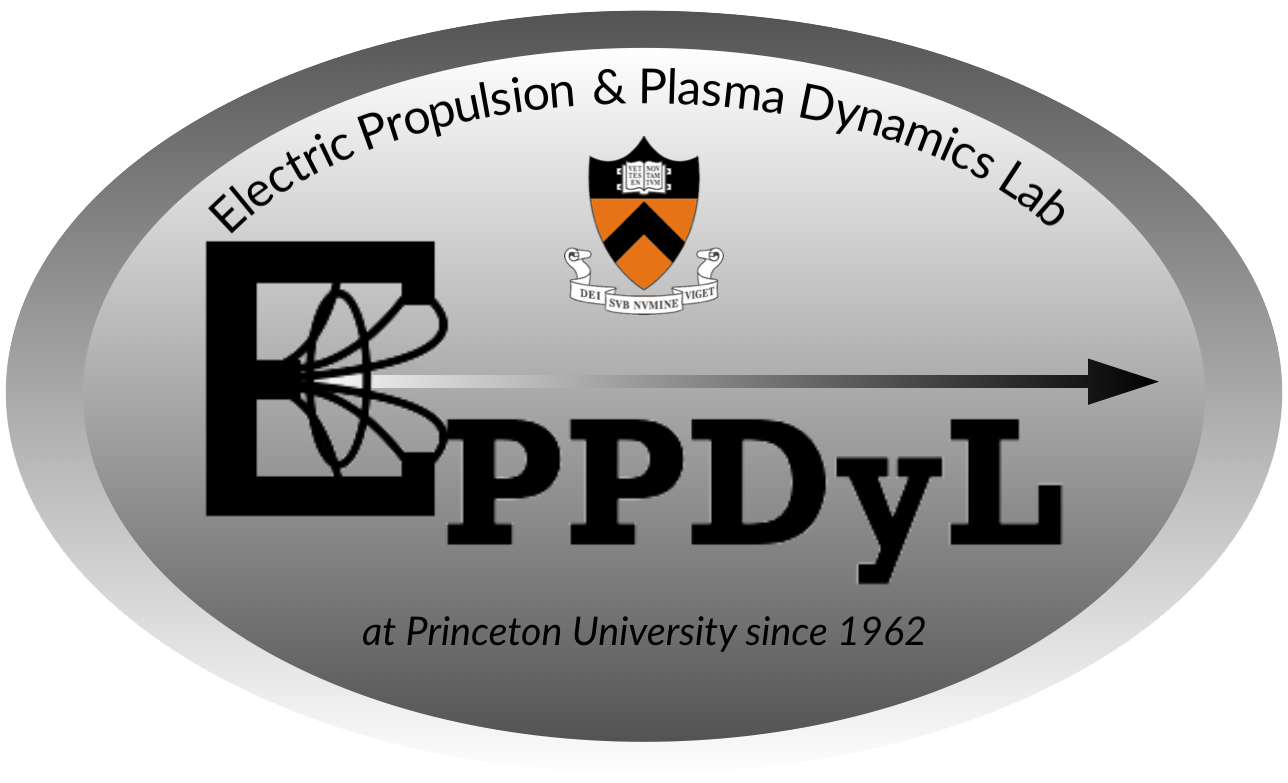Magnetic Null Thruster
Research supported by:
the Princeton Plasma Physics Laboratory's Program in Plasma Science and Technology
Introduction
The Magnetic Null Thruster (MagNuT) is a cross-field, steady-state, electrodeless, plasma thruster that operates principally using a magnetic reversal to direct ions linearly out of the device. A three-dimensional representation of the Beating Wave Magnetic Null Thruster design can be seen in Figure 1. The thruster consists of two helmhotz-like, current conducting coils with one each above and below the y = 0 plane. The upper coil pair generates a uniform magnetic field in the positive-z direction, and the lower coil has an opposite polarity generating an equal magnitude magnetic field in the negative-z direction. In the y=0 plane, the magnetic field reverses sign and we have the eponymous “Magnetic Null.”

To understand how this works to accelerate a plasma, let’s look at a super-simplified geometry in the two-dimensional x-y plane and assume the magnetic field is uniform with equal and opposite magnitudes above and below the x-axis, where y=0. Fully above and below the magnetic null, ions experience normal gyro motion in the clockwise and counter-clockwise directions, respectively.

But, if we place an ion near the null region, such that it’s gyro-orbit intersects the null, ions undergo “Linear Betatron” orbits, which tend to drift in the positive-x direction and out of the truster! (Note: In a real B-field configuration, there are numerous different ion drift orbits which must be taken into account.) So if we can characteristically push ions towards the Magnetic Null, they can be directed along the null out of the thruster! But how can we do this…?
How is MagNuT Powered?: Beating Electrostatic Waves
Beating Electrostatic Waves have been explored in depth previously, and have shown the potential for ion acceleration from arbitrarily low initial velocities. As an ion is accelerated, it reaches a threshold value, where it can undergo vigorous acceleration via a stochastic process where ions receive periodic “kicks” in energy. In addition to accelerating an ion (which naturally results in a faster ion exit speed), these stochastic “kicks” have the benefit of pushing an ion’s guiding center of motion towards the Magnetic Null as the particle gains energy! In this way, BEWs can help actively select the fastest particles to be exhausted.

To learn more about how Beating Electrostatic Waves heat a plasma and accelerate ions, click here!
Current Research
While the MagNuT powered with BEW shows a clear potential for ion acceleration, we note that the highly magnetized electrons tend to stay attached to the magnetic field lines. Currently research is directed towards exploring how electrons are pulled along with ions in this configuration, in order to reach a self-consistent description of the Thruster. Numerical simulations of a quasineutral plasma being injected along a magnetic reversal show that a net drift can be imparted on a plasma in a preferential direction. It is believed that the efficacy of this process will be significantly enhanced by the addition of BEW into the cavity.


Relevant Publications
- Electron Dynamics in a Beating Electrostatic Wave Magnetic Null Thruster - 48th AIAA/ASME/SAE/ASEE Joint Propulsion Conference and Exhibit (2012)
- Simulations of Direct Ion Acceleration with Beating Electrostatic Waves - 31st International Electric Propulsion Conference (2011)
- A Plasma Propulsion Concept Based on Direct Ion Acceleration with Beating Electrostatic Waves - 46th AIAA/ASME/SAE/ASEE Joint Propulsion Conference (2010)
Contact
Former students:- Matthew Feldman
- Bayard Gardineer
- Ben Jorns
